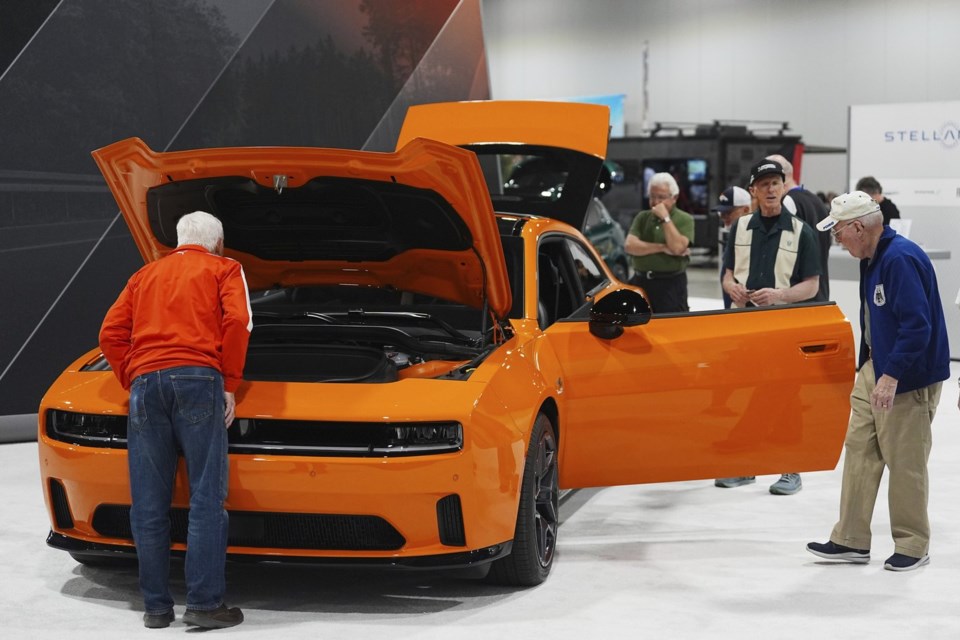Stellantis, the maker of Jeep and Ram vehicles, says its preliminary estimates show a 2.3 billion euros ($2.68 billion) net loss in the first half of the year due to U.S. tariffs and some hefty charges.
The automaker anticipates an impact of about 300 million euros for net tariffs incurred, and also expects planned production losses related to implementing its response plan.
The automaker provided preliminary financial figures on Monday after suspending financial guidance in April due to Trump's tariffs. It also halted production at plants in Canada and Mexico in response to a 25% tax on imported cars, and it temporarily laid off 900 workers at plants in Michigan and Indiana.
Stellantis expects approximately 3.3 billion euros ($3.84 billion) of pretax net charges mostly related to program cancellation costs and platform impairments, restructuring and the net impact of costs related to emission standards. Automakers have been penalized if the average fuel economy of their annual fleet of vehicle production exceeds a certain level.
Antonio Filosa took over as CEO two months ago after Carlos Tavares resigned under pressure last year.
Stellantis, which was created from the 2021 merger of France’s PSA Peugeot with Italian-U.S. carmaker Fiat Chrysler Automobiles, is the world’s fourth-largest car manufacturer. It is based in the Netherlands.
Stellantis will release its financial results for the first half of the year on July 29.
President Donald Trump signed executive orders in April to relax some of his 25% tariffs on automobiles and auto parts, a significant reversal as the import taxes threatened to hurt domestic manufacturers.
Automakers and independent analyses have indicated that the tariffs could raise prices, reduce sales and make U.S. production less competitive worldwide. Trump portrayed the changes as a bridge toward automakers moving more production into the United States.
The tariffs ordered by Trump are hitting the entire auto sector, which sends vehicles and parts across the northern and southern borders of the U.S. repeatedly as they are assembled. The Center for Automative Research says that a uniform 25% tariff on all trading partners would have an increased cost of $107.7 billion to all U.S. automakers and an increased cost of $41.9 billion for the Big Three automakers in Detroit, Stellantis, General Motors and Ford.
General Motors
In May General Motors lowered its profit expectations for the year as the carmaker braced for a potential impact from auto tariffs as high as $5 billion in 2025.
The Detroit automaker said at the time that it anticipated full-year adjusted earnings before interest and taxes in a range of $10 billion to $12.5 billion. The guidance includes a current tariff exposure of $4 billion to $5 billion.
Ford
That same month, Ford Motor said that it expects to take a $1.5 billion hit to its operating profit from tariffs this year and was withdrawing its full-year financial guidance due to the uncertainty created by the Trump administration’s evolving trade policy.
Ford and Tesla are expected to see a smaller impact from tariffs than GM and other automakers because they assemble more of their cars in the U.S. Still, what impact they do see won’t be insignificant.
Michelle Chapman, The Associated Press



